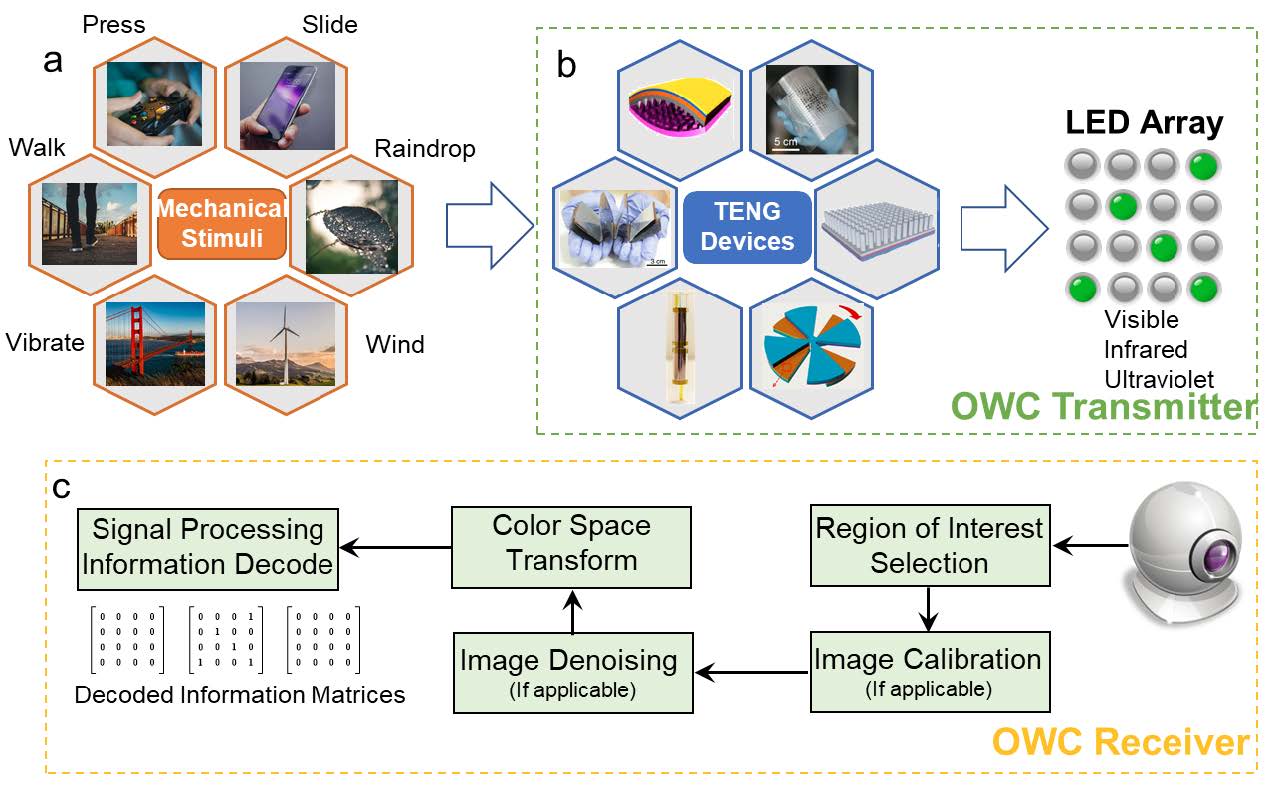A Georgia Tech research team has developed a self-powered optical wireless communications (OWC) system driven by a triboelectric nanogenerator (TENG) with wireless control, sensing, and authentication capabilities. By harvesting mechanical energy from the natural environment—rotation, sliding, pressure, or vibration—the TENG overcomes the high maintenance costs and limited applicability of most other OWC technologies that rely on direct current (DC) power supply. Powered by the TENG, a light-emitting diode (LED) array works as a wireless transmitter to convey the information associated with mechanical stimuli without the need for electrical power.
In this sense, the TENG functions as both the mechanical event trigger and the power source of the LED, simplifying and streamlining the OWC system. Additionally, leveraging OWC technology bypasses the congestion faced by traditional radio frequency (RF) techniques and makes use of a much larger electromagnetic band for wireless activity.
- High capacity: Utilizes optical electromagnetic frequencies for transmission to bypass the crowding from other wireless service providers
- Sustainable: Sources renewable energy via the TENG
- Practical: Contains parameters and techniques that can be optimized for different circumstances
This technology has the potential to significantly broaden IoT applications to a wide variety of areas. Some specific examples of how the system may integrate with current IoT applications include:
- Remote control
- Wireless pressure detection
- Touch-based user authentication/identification
As IoT use grows, so do wireless communication challenges due to the increasing number of sensors that keep wireless systems connected. Most current IoT communications systems rely on RF connections, such as wireless local area networks (WLAN), cellular networks, Bluetooth® connections, and radio frequency identification (RFID), by licensing sub-bands of the RF spectrum. Georgia Tech’s self-powered OWC transmission system utilizes the high-capacity, unlicensed optical bandwidth in order to bypass the limited capacity of the RF wavelengths. The TENG also eliminates the need for a bulky, costly external power supply.
Bluetooth is a registered trademark of Bluetooth SIG, Inc.

An illustration of the self-powered OWC system that includes (a) the potential mechanical stimuli that can be monitored, (b) different TENG devices working with the LED transmitter, and (c) the OWC receiver that detects the information conveyed by the light
